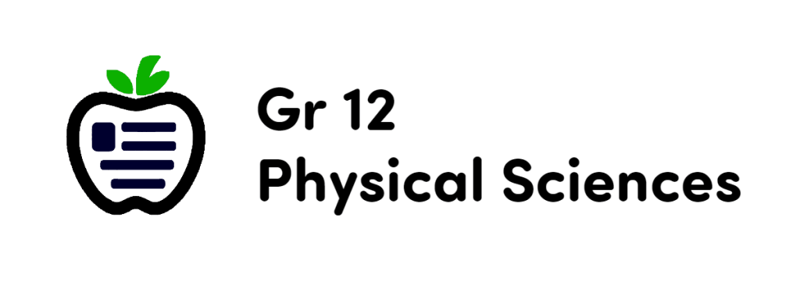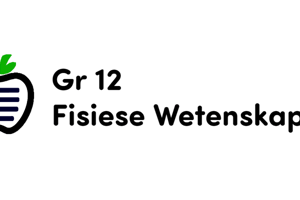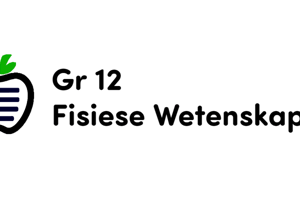Podcast
Questions and Answers
What type of systems allow the exchange of both matter and energy with the surroundings?
What type of systems allow the exchange of both matter and energy with the surroundings?
- Reversible systems
- Open systems (correct)
- Isolated systems
- Closed systems
Which symbol indicates a reversible reaction?
Which symbol indicates a reversible reaction?
- →
- ⇒
- ⇐
- ⇌ (correct)
In a closed system, which of the following can be exchanged with the surroundings?
In a closed system, which of the following can be exchanged with the surroundings?
- Energy (correct)
- Nothing
- Matter
- Both Matter and Energy
Which type of system allows no exchange of matter or energy with the surroundings?
Which type of system allows no exchange of matter or energy with the surroundings?
What is the significance of the double-headed arrow (⇌) in chemical reactions?
What is the significance of the double-headed arrow (⇌) in chemical reactions?
Which type of system involves a boiling pot of water without a lid?
Which type of system involves a boiling pot of water without a lid?
What happens to steam in an open system like a boiling pot of water?
What happens to steam in an open system like a boiling pot of water?
Which type of reaction involves the synthesis and decomposition of ammonia?
Which type of reaction involves the synthesis and decomposition of ammonia?
Which type of flask containing a chemical reaction allows only transfer of energy but not matter with its surroundings?
Which type of flask containing a chemical reaction allows only transfer of energy but not matter with its surroundings?
What happens in a reversible reaction when products react together?
What happens in a reversible reaction when products react together?
What defines a state of balance in which the rate of the forward reaction equals the rate of the reverse reaction?
What defines a state of balance in which the rate of the forward reaction equals the rate of the reverse reaction?
Which type of reaction involves reactants and products in different phases?
Which type of reaction involves reactants and products in different phases?
How does increasing pressure affect the position of equilibrium for gases?
How does increasing pressure affect the position of equilibrium for gases?
What does Le Châtelier's principle state about dynamic equilibrium?
What does Le Châtelier's principle state about dynamic equilibrium?
Which field benefits from understanding chemical equilibrium in processes like ammonia synthesis?
Which field benefits from understanding chemical equilibrium in processes like ammonia synthesis?
'Equilibrium constant (K_eq)' is a measure expressed as a ratio of which concentrations?
'Equilibrium constant (K_eq)' is a measure expressed as a ratio of which concentrations?
In ammonia synthesis, what conditions are used to shift the equilibrium towards ammonia formation?
In ammonia synthesis, what conditions are used to shift the equilibrium towards ammonia formation?
'Equilibrium concepts are integral to environmental processes' refers to which example in the text?
'Equilibrium concepts are integral to environmental processes' refers to which example in the text?
What type of reaction favors the endothermic process when the temperature is raised?
What type of reaction favors the endothermic process when the temperature is raised?
Why is understanding chemical equilibrium important in pharmaceuticals?
Why is understanding chemical equilibrium important in pharmaceuticals?
What factor influences the position of chemical equilibrium by shifting it towards the side with fewer gas molecules?
What factor influences the position of chemical equilibrium by shifting it towards the side with fewer gas molecules?
In a heterogeneous reaction, what occurs?
In a heterogeneous reaction, what occurs?
What is the purpose of the Haber process in relation to ammonia synthesis?
What is the purpose of the Haber process in relation to ammonia synthesis?
Which principle states that a dynamic equilibrium responds to disturbances by counteracting them to re-establish equilibrium?
Which principle states that a dynamic equilibrium responds to disturbances by counteracting them to re-establish equilibrium?
What measure quantitatively expresses a reaction at equilibrium as a ratio of product concentrations to reactant concentrations?
What measure quantitatively expresses a reaction at equilibrium as a ratio of product concentrations to reactant concentrations?
In what type of reaction does raising the temperature favor the endothermic process?
In what type of reaction does raising the temperature favor the endothermic process?
In the context of open and closed systems, what distinguishes a closed system from an open one?
In the context of open and closed systems, what distinguishes a closed system from an open one?
Which of the following best represents the equilibrium state in a reversible reaction?
Which of the following best represents the equilibrium state in a reversible reaction?
In the reaction $2\text{N}_2(\text{g}) + 3\text{H}_2(\text{g}) \rightleftharpoons 2\text{NH}_3(\text{g})$, what would be the effect of increasing the pressure on the equilibrium position?
In the reaction $2\text{N}_2(\text{g}) + 3\text{H}_2(\text{g}) \rightleftharpoons 2\text{NH}_3(\text{g})$, what would be the effect of increasing the pressure on the equilibrium position?
Which of the following statements accurately describes a reversible reaction?
Which of the following statements accurately describes a reversible reaction?
In the context of open and closed systems, which of the following is an example of an open system?
In the context of open and closed systems, which of the following is an example of an open system?
In the context of chemical equilibrium, what does the double-headed arrow (⇌) represent?
In the context of chemical equilibrium, what does the double-headed arrow (⇌) represent?
Which of the following statements about equilibrium constants (K_eq) is correct?
Which of the following statements about equilibrium constants (K_eq) is correct?
In the context of chemical equilibrium, which of the following statements is true?
In the context of chemical equilibrium, which of the following statements is true?
In the context of open and closed systems, which of the following statements is true?
In the context of open and closed systems, which of the following statements is true?
Which of the following factors would shift the equilibrium position in the reaction $2\text{N}_2(\text{g}) + 3\text{H}_2(\text{g}) \rightleftharpoons 2\text{NH}_3(\text{g})$ towards the formation of more ammonia?
Which of the following factors would shift the equilibrium position in the reaction $2\text{N}_2(\text{g}) + 3\text{H}_2(\text{g}) \rightleftharpoons 2\text{NH}_3(\text{g})$ towards the formation of more ammonia?
Which statement best describes the concept of dynamic equilibrium?
Which statement best describes the concept of dynamic equilibrium?
In a heterogeneous reaction, which of the following accurately describes the phases involved?
In a heterogeneous reaction, which of the following accurately describes the phases involved?
According to Le Châtelier's principle, if the concentration of a reactant is increased in a dynamic equilibrium, the system will respond by:
According to Le Châtelier's principle, if the concentration of a reactant is increased in a dynamic equilibrium, the system will respond by:
The equilibrium constant ($K_{eq}$) for a chemical reaction is expressed as a ratio of:
The equilibrium constant ($K_{eq}$) for a chemical reaction is expressed as a ratio of:
Which of the following conditions would shift the equilibrium position in the Haber process for ammonia synthesis towards the formation of more ammonia?
Which of the following conditions would shift the equilibrium position in the Haber process for ammonia synthesis towards the formation of more ammonia?
Which of the following examples illustrates an open system in the context of chemical equilibrium?
Which of the following examples illustrates an open system in the context of chemical equilibrium?
In the context of chemical equilibrium, which of the following statements is true regarding the double-headed arrow (⇌)?
In the context of chemical equilibrium, which of the following statements is true regarding the double-headed arrow (⇌)?
Which of the following principles states that a dynamic equilibrium responds to disturbances by counteracting them to re-establish equilibrium?
Which of the following principles states that a dynamic equilibrium responds to disturbances by counteracting them to re-establish equilibrium?
In the context of environmental processes, which example from the text illustrates the relevance of equilibrium concepts?
In the context of environmental processes, which example from the text illustrates the relevance of equilibrium concepts?
Which of the following statements accurately describes the purpose of the Haber process in relation to ammonia synthesis?
Which of the following statements accurately describes the purpose of the Haber process in relation to ammonia synthesis?
What distinguishes the equilibrium of reversible reactions from irreversible reactions?
What distinguishes the equilibrium of reversible reactions from irreversible reactions?
How do open and closed systems differ in terms of matter and energy exchange with surroundings?
How do open and closed systems differ in terms of matter and energy exchange with surroundings?
In the context of chemical equilibrium, how does an increase in temperature typically affect the position of equilibrium?
In the context of chemical equilibrium, how does an increase in temperature typically affect the position of equilibrium?
What is the significance of Le Châtelier's principle in the context of chemical equilibrium?
What is the significance of Le Châtelier's principle in the context of chemical equilibrium?
Which factor plays a significant role in influencing the position of chemical equilibrium in reversible reactions?
Which factor plays a significant role in influencing the position of chemical equilibrium in reversible reactions?
What happens when products react together in a reversible reaction?
What happens when products react together in a reversible reaction?
How do reversible reactions differ from irreversible reactions in terms of reaching completion?
How do reversible reactions differ from irreversible reactions in terms of reaching completion?
What is the primary role of a catalyst in influencing chemical equilibrium?
What is the primary role of a catalyst in influencing chemical equilibrium?
How do open systems differ from closed systems regarding heat transfer?
How do open systems differ from closed systems regarding heat transfer?
What effect does increasing pressure have on a closed flask containing a chemical reaction?
What effect does increasing pressure have on a closed flask containing a chemical reaction?
What distinguishes open systems from closed systems in terms of matter and energy exchange with surroundings?
What distinguishes open systems from closed systems in terms of matter and energy exchange with surroundings?
In reversible reactions, what does the double-headed arrow (⇌) symbolize?
In reversible reactions, what does the double-headed arrow (⇌) symbolize?
Which type of system involves a sealed flask containing a chemical reaction, permitting only energy transfer?
Which type of system involves a sealed flask containing a chemical reaction, permitting only energy transfer?
What occurs when steam escapes into the atmosphere in an open system like a boiling pot of water?
What occurs when steam escapes into the atmosphere in an open system like a boiling pot of water?
Which factor plays a crucial role in influencing the position of chemical equilibrium in reversible reactions?
Which factor plays a crucial role in influencing the position of chemical equilibrium in reversible reactions?
What does Le Châtelier's principle predict will happen when a disturbance affects a dynamic equilibrium?
What does Le Châtelier's principle predict will happen when a disturbance affects a dynamic equilibrium?
Which statement accurately describes a difference between open and closed systems?
Which statement accurately describes a difference between open and closed systems?
What is the primary distinction between a boiling pot of water without a lid (open system) and a sealed flask containing a chemical reaction (closed system)?
What is the primary distinction between a boiling pot of water without a lid (open system) and a sealed flask containing a chemical reaction (closed system)?
How do reversible reactions differ from irreversible reactions in terms of reaching equilibrium?
How do reversible reactions differ from irreversible reactions in terms of reaching equilibrium?
What happens to substances entering or leaving a sealed flask containing a chemical reaction?
What happens to substances entering or leaving a sealed flask containing a chemical reaction?
Which one of the following best describes the concept of dynamic equilibrium?
Which one of the following best describes the concept of dynamic equilibrium?
In the context of chemical equilibrium, which of the following statements is correct regarding the equilibrium constant ($K_{eq}$)?
In the context of chemical equilibrium, which of the following statements is correct regarding the equilibrium constant ($K_{eq}$)?
According to Le Chtelier's principle, if the concentration of a reactant is increased in a system at dynamic equilibrium, the system will respond by:
According to Le Chtelier's principle, if the concentration of a reactant is increased in a system at dynamic equilibrium, the system will respond by:
Which of the following statements best describes the difference between homogeneous and heterogeneous reactions?
Which of the following statements best describes the difference between homogeneous and heterogeneous reactions?
How does increasing the pressure affect the position of equilibrium for a reaction involving gases, according to Le Chtelier's principle?
How does increasing the pressure affect the position of equilibrium for a reaction involving gases, according to Le Chtelier's principle?
Which of the following is an example of a heterogeneous reaction mentioned in the text?
Which of the following is an example of a heterogeneous reaction mentioned in the text?
What is the primary role of a catalyst in influencing chemical equilibrium?
What is the primary role of a catalyst in influencing chemical equilibrium?
Which of the following factors would shift the equilibrium position in the reaction $2 ext{N}_2( ext{g}) + 3 ext{H}_2( ext{g})
ightleftharpoons 2 ext{NH}_3( ext{g})$ towards the formation of more ammonia?
Which of the following factors would shift the equilibrium position in the reaction $2 ext{N}_2( ext{g}) + 3 ext{H}_2( ext{g}) ightleftharpoons 2 ext{NH}_3( ext{g})$ towards the formation of more ammonia?
In the context of open and closed systems, which of the following statements is true?
In the context of open and closed systems, which of the following statements is true?




